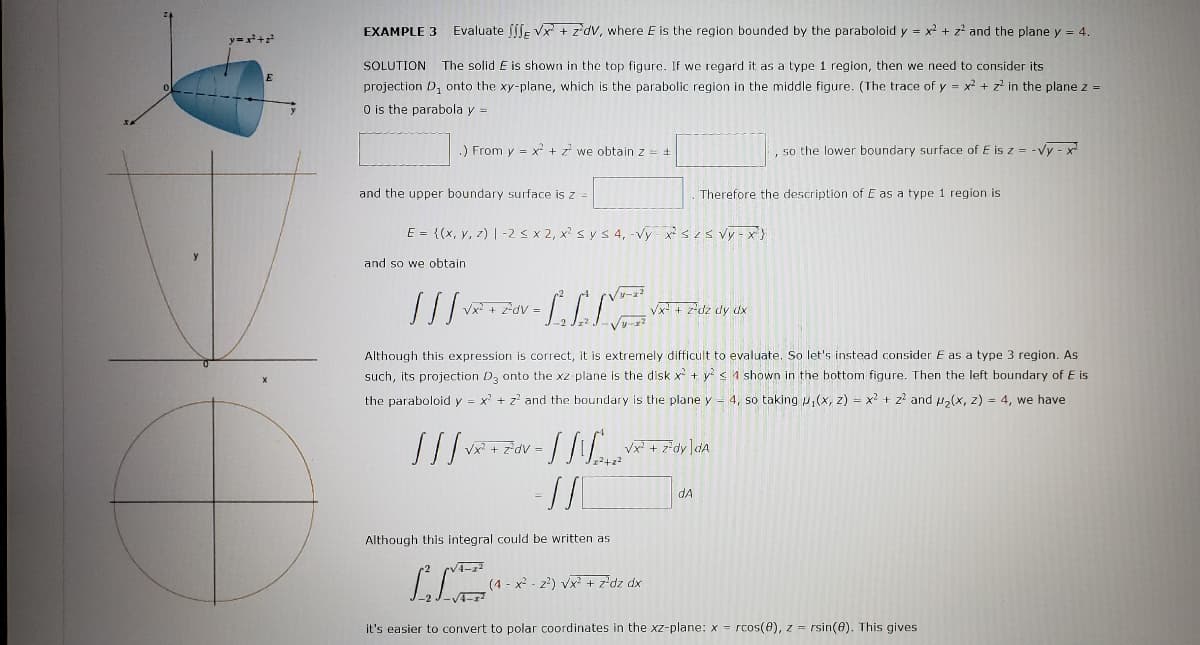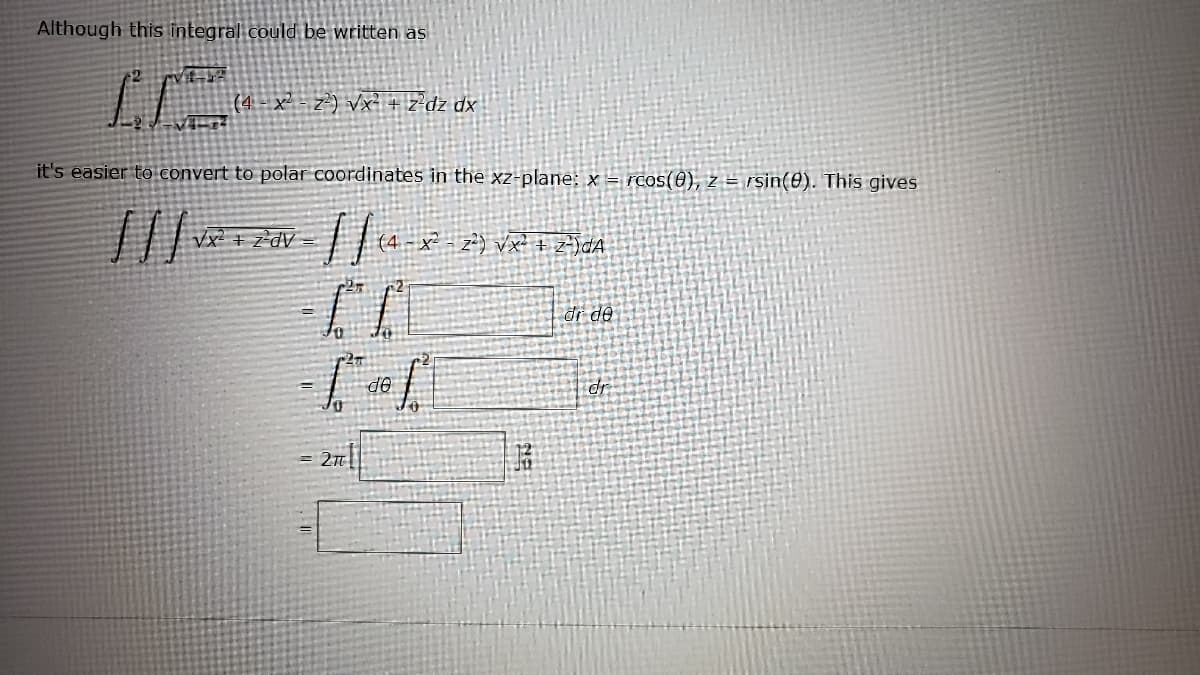EXAMPLE 3 Evaluate fE Vx + z'dv, where E is the region bounded by the paraboloid y = x + z and the plane y = 4. The solid E is shown in the top figure. If we regard it as a type 1 region, then we need to consider its projection D, onto the xy-plane, which is the parabolic region in the middle figure. (The trace of y = x + z in the plane z = SOLUTION %3D O is the parabola y =
EXAMPLE 3 Evaluate fE Vx + z'dv, where E is the region bounded by the paraboloid y = x + z and the plane y = 4. The solid E is shown in the top figure. If we regard it as a type 1 region, then we need to consider its projection D, onto the xy-plane, which is the parabolic region in the middle figure. (The trace of y = x + z in the plane z = SOLUTION %3D O is the parabola y =
Algebra & Trigonometry with Analytic Geometry
13th Edition
ISBN:9781133382119
Author:Swokowski
Publisher:Swokowski
Chapter9: Systems Of Equations And Inequalities
Section: Chapter Questions
Problem 12T
Related questions
Question
no. 3 2.6

Transcribed Image Text:EXAMPLE 3
Evaluate [[ſE Vx + z*dV, where E is the region bounded by the paraboloid y = x2 + z² and the plane y = 4.
y=+
SOLUTION
The solid E is shown in the top figure. If we regard it as a type 1 region, then we need to consider its
projection D, onto the xy-plane, which is the parabolic region in the middle figure. (The trace of y = x + z' in the plane z =
O is the parabola y =
) From v = x + z we obtain z = +
so the lower boundary surface of E is z = -vy - x
and the upper boundary surface is z =
Therefore the description of E as a type 1 region is
E = {(x, y, z) | -28x2, x? sy s 4, -vy xszs vy - x}
and so we obtain
Vx + zdv =
Vx + z*dz dy dx
Although this expression is correct, it is extremely difficult to evaluate. So let's instead consider E as a type 3 region. As
such, its projection D, onto the xz-plane is the disk x + y s 1 shown in the bottom figure. Then the left boundary of E is
the paraboloid y = x' + z? and the boundary is the plane y-
4, so taking u,(x, z) = x2 + z? and u,(x, z) = 4, we have
Vx? + z*dV =
dA
Although this integral could be written as
(4 - x - z') vx + z'dz dx
/4-r
it's easier to convert to polar coordinates in the xz-plane: x = rcos(8), z = rsin(8). This gives

Transcribed Image Text:Although this integral could be written as
(4 - x² - z²) Vx² + z*dz_dx
it's easier to convert to polar coordinates in the xz-plane: x = rcos(0), z = rsin(@). This gives
Vx² + z²dV_
| đi dên
dr
op
Expert Solution
This question has been solved!
Explore an expertly crafted, step-by-step solution for a thorough understanding of key concepts.
Step by step
Solved in 6 steps

Recommended textbooks for you

Algebra & Trigonometry with Analytic Geometry
Algebra
ISBN:
9781133382119
Author:
Swokowski
Publisher:
Cengage

Algebra & Trigonometry with Analytic Geometry
Algebra
ISBN:
9781133382119
Author:
Swokowski
Publisher:
Cengage